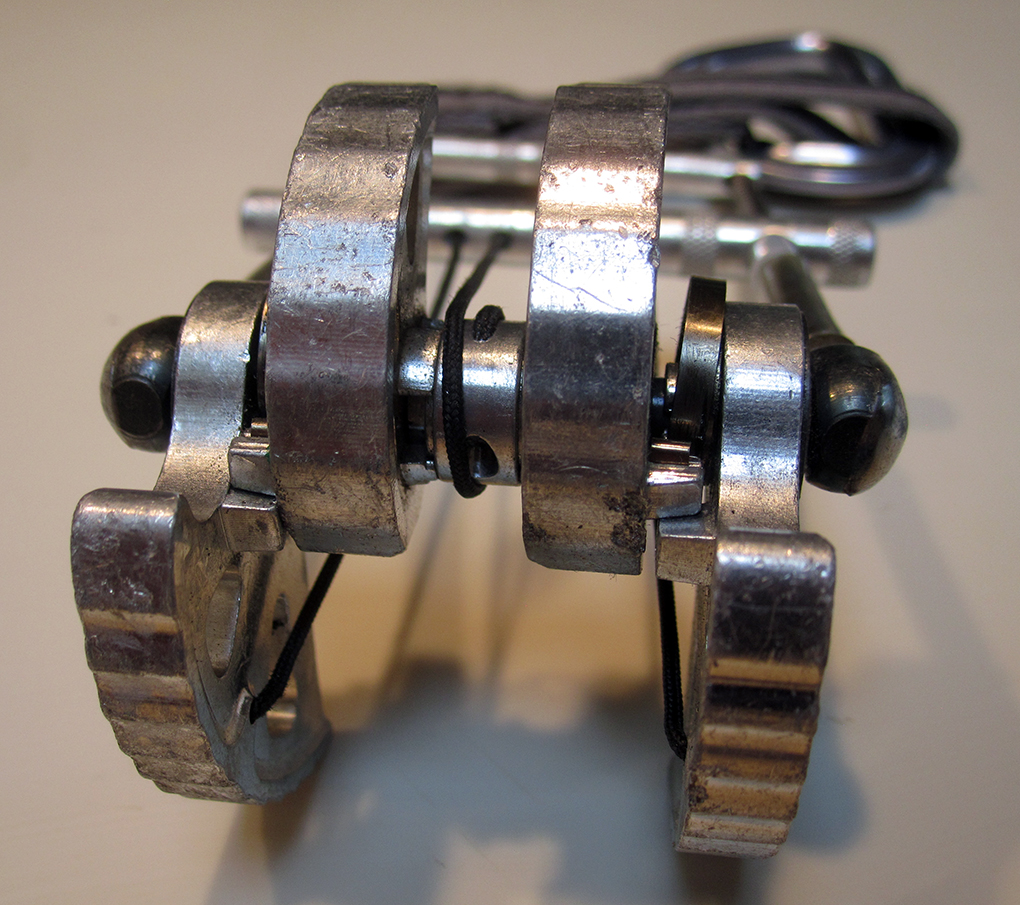
Metolius Supercam
Size Tested: Small
Features:
- Kevlar trigger material
- Machined cam stops
- ¾” (19 mm) tubular nylon webbing
- Color-coded sewn slings and tubing
- CNC machined
- 6061-T6 aluminum
- CE/UIAA certified
MSRP: $70-$90
Days Tested: 20
Locations Tested: Indian Creek, Rocky Mountain National Park, South Platte Colorado; Vedauwoo, Wyoming.
The Metolius Supercam isn’t new to the market, but its asymmetrical lobe design makes it one of the more unusual cams sold today. I’ve always wondered how the Supercam, as a kind of oddity, has persisted in isolation. If the cam’s asymmetrical design is any good, one would imagine that it would be eventually be adopted by other manufacturers, much in the way that DMM co-opted Black Diamond’s double axel Camalot design for their Dragons.
But if the design was only notable as a novelty, in a “gee-whiz that looks cool” sort of way, but suffered from practical drawbacks in the real world, then it seems Metolius would have abandoned the design.
Neither of these things, however, has happened. The Metolius Supercam has largely gone unnoticed except for a small cadre of climbers for whom it is a wonder; “one of the best kept secrets in traditional rock climbing.” So what’s going on here? Should more people be using the Supercam? Or is it really only suited for a specific group of climbers? And if the latter is the case, why?
I finally got a chance to haul a Supercam around for a full rock season, hoping to clear some of this up for myself.
Design
For those unfamiliar with the Supercam, its design is strikingly unconventional, in a sense adapting the familiar four-lobe design, but using two sets different sized lobes. Off-set cams also employ this tactic (using two different lobe sizes on a single cam) in order to accommodate flaring cracks; the two smaller lobes sit opposed at one end of the axle, while the larger set of lobes oppose each other at the other end. The Supercam uses different sized lobes too, but puts the two smaller lobes next to one another with the larger ones bracketing them at either end of the axle.
But doesn’t rearranging the lobes in this manner negate all the benefit that off-set cams provide in flaring cracks? Yes, absolutely. But the design of the Supercam isn’t meant to better tackle flared cracks. The point of this configuration, instead, is to provide the device with greater range.
Because manufacturers are limited to a relatively narrow range of cam angles (the values which define the curvature of the logarithmic-spiral-shape of the lobes), they’ve been forced to resort to varied and clever ways of maximizing the range that a cam safely covers. Black Diamond pioneered the double axel, made famous on the Camalot. Omega-Pacific put forward the compound lobes on the Link cam. Metolius, whose cam angle was the smallest on the market made them particularly in need of improved range, submitted the Supercam.
(If your cam anatomy and engineering basics are a little rusty, check out the footnote embedded in my Wild Country Helium Friends review, for info on cam range, and give Cams 101: Glossary a read.)

Metolius seeks to maximize the range of the Supercam with the design of its trigger wires. Rather than using cables, Metolius uses Kevlar “string” which wraps around the cam’s axle between its smaller lobes and attaches to the larger ones. The lobes rotate around the axle together because the the Kevlar triggers yield two different diameter curves around it. This allows the two sets of lobes to rotate in concert, despite the fact that they are different sizes.
The concept here is similar to the gears on a bike. In order to overcome the need for the smaller lobes to rotate more than the larger ones, the flexible trigger wires rotate the different sized lobes on different size “gears” (figuratively speaking, the different radii around which the wires are pulled, not actual gears like those on a bike). These flexible wires are plenty robust, and have since been co-opted for use in Mastercams, etc.
Usable Range
This asymmetry is a clever solution, and it does indeed provide added range. For instance, compare the small (grey) Supercam to the comparably-sized light blue Metolius Powercam: both cams have the same cam angle and the Supercam covers 21.6mm while the Powercam covers 17.1mm. In the case of the Supercam, those 21.6mm span from 41.9-63.5mm, coverage from tight hands to perfect hands.

This is definitely an improvement, and it helps Metolius bridge the gap between themselves and their competition, despite their use of a single-axle design with relatively small cam angles to boot. But the coverage from the same small Supercam is still less than the 27.7mm covered by a gold #2 C4 (which has a stated range of 37.2-64.9mm). This still is a significant disparity, but the real world difference in range felt less dramatic. The shape of the Supercam proved more influential in how it can be used.
